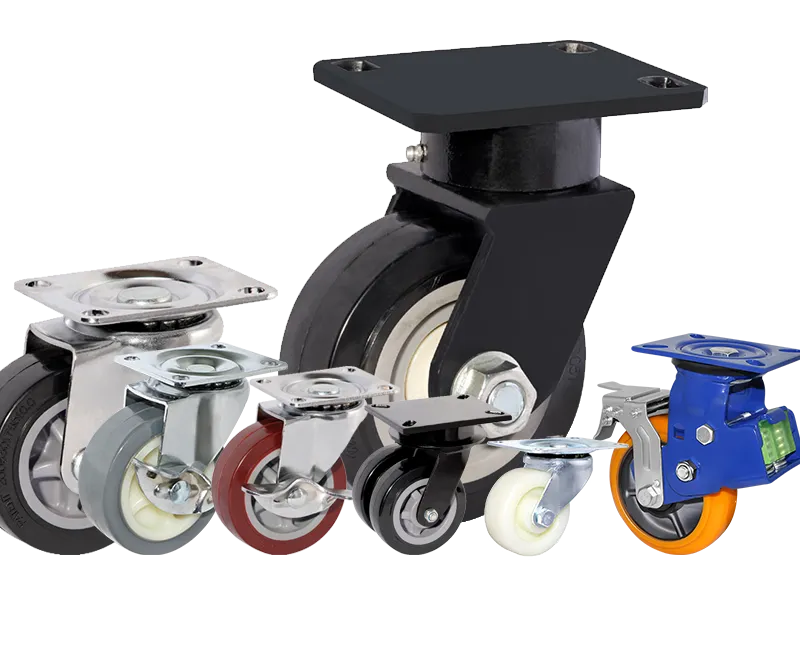In global trade, the correct classification of products such as caster wheels is crucial. These components are vital in various industries, and understanding their Harmonized System (HS) code is essential for businesses in international trade.

HS Code System
The Harmonized System (HS) is an internationally standardized naming and numbering system for classifying traded products. It’s critical for determining tariffs, statistics, and trade policies.
Detailing Caster Wheel HS Code
Caster wheels are classified under specific HS codes based on their material and design. For instance:
- HS Code 8302.20: This code covers casters with mountings of base metal, commonly used for office chairs and endüstriyel trolleys.
- HS Code 8716.90: Pertains to casters designed for use in transport containers.
- HS Code 8483.50: This includes transmission shafts and cranks, which cover certain types of heavy-duty caster wheels.
Please note that determining the correct HS Code requires consideration of the specific malzeme, use, and characteristics of the caster. Different countries and regions may have slightly different classification standards. When conducting import and export activities, it is best to consult your local customs or professional trade consultant to ensure that the correct classification code is used.
Importance in Caster Wheel Trade and Customs
The correct HS code impacts customs duties and compliance with trade regulations. Incorrect classification can lead to fines and delays in shipment.
An example is a company that incorrectly classified heavy-duty industrial caster wheels, resulting in overpaid tariffs and legal complications.
bulcaster is a professional manufacturer and trader of casters. If you have any questions during the import process of casters, you can get a free consultation from us.
Çözüm
Understanding the HS code for caster wheels is vital for compliance and economic efficiency in international trade. It ensures accurate tariff applications and smooth customs processes.
Customs websites of major countries in the world often provide important information on import and export rules, tax rates, prohibited and restricted items, etc. Here is a list of customs websites for some major countries:
- United States: U.S. Customs and Border Protection (CBP) – https://www.cbp.gov/
- China: China Customs – http://www.customs.gov.cn/
- Canada: Canada Border Services Agency (CBSA) – https://www.cbsa-asfc.gc.ca/
- United Kingdom: HM Revenue & Customs (HMRC) – https://www.gov.uk/government/organisations/hm-revenue-customs
- Germany: Federal Customs Administration – https://www.zoll.de/EN/Home/home_node.html
- France: French Customs – https://www.douane.gouv.fr/
- Japan: Japan Customs – https://www.customs.go.jp/english/
- Australia: Australian Border Force – https://www.abf.gov.au/
- India: Central Board of Indirect Taxes and Customs – http://www.cbic.gov.in/
- Russia: Federal Customs Service of Russia – http://customs.ru/
- Italy: Italian Customs Agency – http://www.agenziadoganemonopoli.gov.it/
- Spain: Spanish Tax Agency – http://www.agenciatributaria.es/
- Indonesia: Directorate General of Customs and Excise – http://www.beacukai.go.id/
- Brazil: Federal Revenue of Brazil – http://receita.economia.gov.br/
- Mexico: Tax Administration Service – https://www.sat.gob.mx/
- South Africa: South African Revenue Service (SARS) – http://www.sars.gov.za/
- South Korea: Korea Customs Service – http://www.customs.go.kr/
- Turkey: Turkish Ministry of Customs and Trade – http://www.gtb.gov.tr/
- Argentina: Federal Administration of Public Revenue – http://www.afip.gob.ar/
- Saudi Arabia: Saudi Customs – https://www.customs.gov.sa/
- Vietnam: Vietnam Customs – http://www.customs.gov.vn/
- Philippines: Bureau of Customs (BOC) – https://customs.gov.ph/
- Malaysia: Royal Malaysian Customs Department – http://www.customs.gov.my/
- Singapore: Singapore Customs – https://www.customs.gov.sg/
- Thailand: Thai Customs – http://www.customs.go.th/
- Bangladesh: National Board of Revenue (NBR), Bangladesh – http://nbr.gov.bd/


